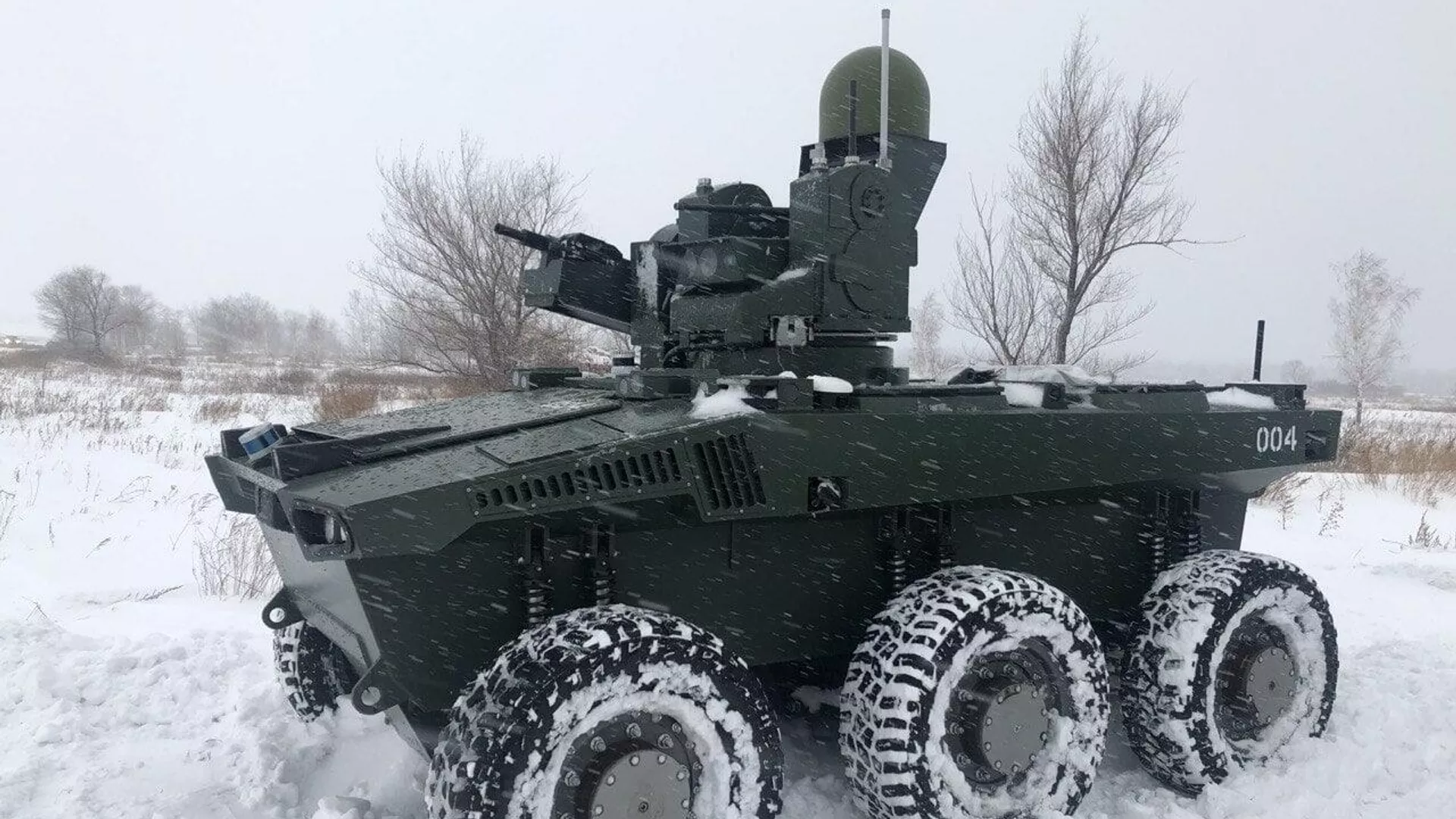Russia plans to outfit its ‘tank killer’ Marker combat robot with a specialized BAS-80 kamikaze drone designed to be small and compatible with the robot.
Yevgeny Dudorov, the executive director of Android Technology, the company that developed the Marker robot, told Ria Novosti that the robot would be fitted with a BAS-80 drone.
Dudorov mentioned that their company had developed an aircraft-style drone called BAS-80 during its development stage and was tested without an explosive.
The primary objective behind developing this drone was to integrate it with the Marker robot, and the team has already tested it on the platform. Additionally, he mentioned that this drone had been designed to function as a kamikaze drone.
Android Technology and the Foundation for Advanced Studies jointly developed the Marker robot.
Weighing approximately three tons, the robot is equipped with advanced autonomous movement capabilities based on artificial intelligence technologies for object recognition.
The platform’s autonomy is achieved through a modular multispectral vision system, which processes data using neural network algorithms.

The developers of the Marker robot from Russia claim that their robotic platform has the most advanced autonomous capabilities for motion in unfamiliar surroundings and identifying objects using artificial intelligence technologies.
The latest report noted that Android Technology experts are developing technologies enabling them to launch the drone with precision, control their movement, and accurately deliver it to the designated target.
The BAS-80 drone, without any warhead, weighs around 1.7 kilograms, and it has a potential warhead capacity of approximately 600 grams, which could be increased if necessary.
The drone has a flight range of up to 30 kilometers and can remain airborne for a maximum of 18 minutes.
Dudorov emphasized that these drones are lighter and less expensive than those currently used in the Russian military. However, their intended functions are comparatively simpler.
Russian ‘Marker’ Combat Robots
In January 2023, Russia announced that the development of its experimental Marker robot combat vehicle had been finished. The robot was built to test advanced technology for second-generation combat robots, which are still in the conceptual stage.
The Marker combat robot can traverse autonomously through any terrain and is equipped with cutting-edge weapons and a suspended unmanned aerial vehicle (UAV).
A modular multispectral vision system ensures the platform’s independence and employs neural network techniques to process data.
Russian officials previously explained that the Marker robot could independently determine the priority of targets.
For instance, if it detects an armored personnel carrier, a T-64, and some foreign equipment along the line of contact, the robot will automatically select the target that holds the most value and engage it with the appropriate firepower.
The Marker combat module can rotate 540 degrees within a second. It can be equipped with different weapons, including anti-tank missile systems, heavy machine guns, grenade launchers, and more.
The Marker comes in two variations. The first version is the “scout” variant, with sensors and a drone designed to assist in scouting activities. The second version is an anti-tank missile-equipped model that can engage the likes of Leopard and Abrams tanks.
The Marker robot was not initially created for warfare, but Russia has already employed these robots to support its operations in Syria and eastern Ukraine.
An earlier statement from a Russian manufacturer stated that the company is modifying one of its ground robots to specifically target Abrams and Leopard tanks, which are being shipped to Ukraine from the US, Germany, Poland, and other nations.
In an interview with the Russian news outlet RIA Novosti, Dmitry Rogozin, former head of the Russian space corporation Roscosmos, claimed that the electronic catalog in the robot’s control system, which contains pictures of enemy equipment, would allow the Marker to automatically recognize and strike the ‘Abrams,’ ‘Leopard,’ and other vehicles.
Russia sent the first four “Markers” to Donbas for testing in February this year.
“The first four Marker robots have arrived in the region strictly on schedule. We begin downloading target images and testing algorithms of warfare within a unit of combat robots and installing powerful anti-tank armament,” Rogozin said at the time.
If Marker combat robots prove successful on the battlefield, they could potentially impact future military operations. Its advanced capabilities in detecting and targeting enemy equipment could provide a strategic advantage to the Russian forces.
- Contact the author at ashishmichel(at)gmail.com
- Follow EurAsian Times on Google News